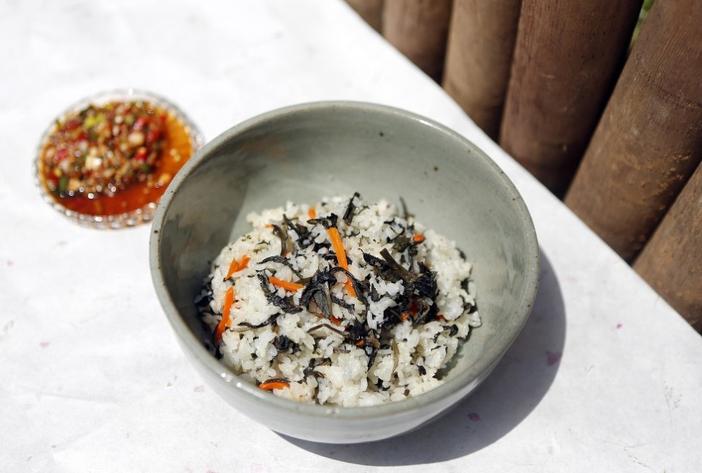Gondre
(Cirsium setidens)
Gondre (Cirsium setidens)
/
/

방신애
CC BY 4.0
Image By:
방신애
Recorded By:
Copyright:
CC BY 4.0
Copyright Notice:
Photo by: 방신애 | License Type: CC BY 4.0 | License URL: https://creativecommons.org/licenses/by/4.0 | Uploader: Ityoppyawit | Publisher: Wikipedia Commons

Estimated Native Range
Summary
Cirsium setidens, commonly known as gondre or Korean thistle, is a perennial herb that thrives in submontane and mountainous regions of the Korean peninsula. It is particularly adapted to open woodlands and grassy slopes, which provide the well-drained soils and exposure to sunlight it requires. This species can reach up to 47 inches in height and is characterized by its basal and lower stem leaves that wither at the onset of flowering. The mid-stem leaves are ovate or broadly lanceolate, while the upper stem leaves are smaller and more narrowly lanceolate. From July to October, Cirsium setidens produces showy large purple flowers, with each capitulum measuring approximately 1-2 inches in diameter.
In cultivation, gondre is valued for its edible young leaves, which are a traditional ingredient in Korean cuisine, particularly as namul—a type of seasoned vegetable dish. It is celebrated as a regional specialty in Jeongseon, Korea. Gardeners may cultivate it for its culinary uses as well as its ornamental purple flowers, which add a splash of color to herb gardens or naturalized areas. It requires full sun to partial shade and prefers well-drained soils. While generally low-maintenance, it is important to ensure that it does not become invasive outside its native range, as thistles can sometimes spread aggressively.CC BY-SA 4.0
In cultivation, gondre is valued for its edible young leaves, which are a traditional ingredient in Korean cuisine, particularly as namul—a type of seasoned vegetable dish. It is celebrated as a regional specialty in Jeongseon, Korea. Gardeners may cultivate it for its culinary uses as well as its ornamental purple flowers, which add a splash of color to herb gardens or naturalized areas. It requires full sun to partial shade and prefers well-drained soils. While generally low-maintenance, it is important to ensure that it does not become invasive outside its native range, as thistles can sometimes spread aggressively.CC BY-SA 4.0
Plant Description
- Plant Type: Herb
- Height: 2-4 feet
- Width: 1-2 feet
- Growth Rate: Moderate
- Flower Color: Purple
- Flowering Season: Summer
- Leaf Retention: Deciduous
Growth Requirements
- Sun: Full Sun, Part Shade
- Water: Medium
- Drainage: Medium
Common Uses
Bird Garden, Butterfly Garden, Low Maintenance
Natural Habitat
Submontane and mountainous regions, open woodlands, and grassy slopes
Other Names
Common Names: Setidens
Scientific Names: , Cirsium setidens, Cirsium chanroenicum, Cirsium chanroenicum var. chanroenicum, Cirsium chanroenicum var. lanceolata, Cirsium chanroenicum var. pinnatifolium, Cirsium setidens f. albiflorum, Cirsium setidens f. lanceolatum, Cirsium setidens f. niveoaraneum, Cirsium setidens f. setidens
GBIF Accepted Name: